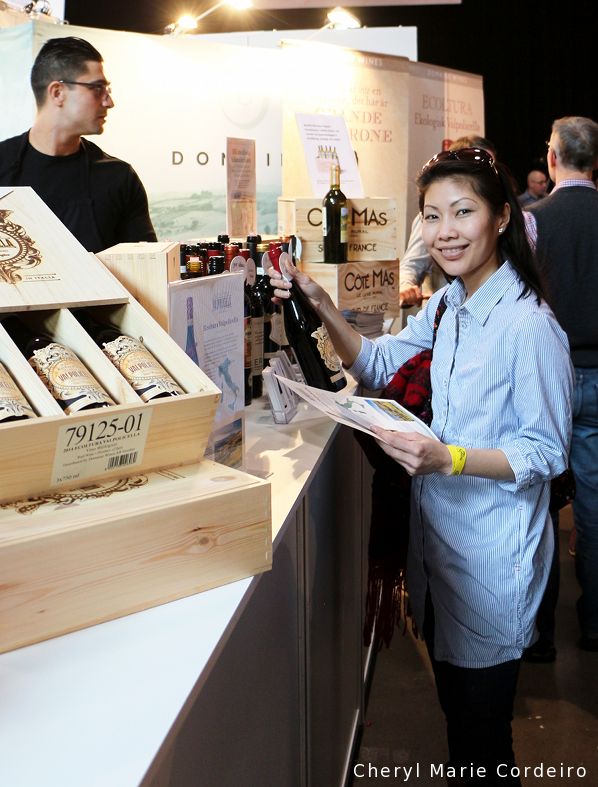A sample of wines from Domaine Wines Sweden at Passion för Mat 2016 (26-28 Feb.), Gothenburg.
Text & Photo © JE Nilsson, CM Cordeiro, Sweden 2016
Just about a decade ago, the idea of using locally produced raw ingredients saw its effects of the pulling together of marketing efforts of small and medium sized enterprises (SMEs) in the food and beverage industry. One such marketplace that facilitated the actualisation of the ideology of ‘locally produced’ that in turn helped Sweden rediscover their own culinary heritage that might have even breathed life to the current Nordic cuisine scene is the food trade fair, Passion för Mat that began in 2008 at Eriksbergshallen in Gothenburg.
This year’s theme for the food fair is “Food with Identity”. First that came to my mind on the theme were the lengthy, interesting and sometimes heated Swedish midsummer night debates with friends of the Western Swedish Academy of Gastronomy on the heritage and origins of certain wines and cheeses, particularly from France and Italy. But there were theoretical and practical underpinnings to these discussions as written by Mantrov (2014):
“Understanding of indications of geographical origin (IGOs) and the necessity for their protection emerged from two opposite though mutually related powers. From one side, it emerged from efforts of interested persons, mainly producers of goods bearing IGOs, to develop recognition of designations (usually names) capable to designate their geographical origin. From another side, it arose as a response to practices of such persons who exploited the commercial success of those names not being in any way associated with the geographical places referred to in those names at all (nowadays these persons are called imitators). The history of IGOs, therefore, reveals a broad list of examples of when IGOs were illegally exploited by persons who were not entitled to use these names, i.e. imitators, and the efforts of interested persons to stop such illegal exploitation, i.e. to stop imitations of IGOs. As a result, the history of the development of the law on IGOs is simultaneously the history of the unlawful use (imitations) of IGOs and of the efforts to develop regulation for combating such unlawful use.” [1:31]
Extended from the 1951 Stresa International Convention applied for the protecting of names of cheeses, the European Union (EU) has three known frameworks for the purposes of protecting the heritage and integrity of foodstuffs produced in its member states. The (i) PDO (protected designation of origin), covers agricultural products and food produced, processed and prepared in a given geographical area using recognised expertise and knowledge, the (ii) PGI (protected geographical indication) covers agricultural products and food produced that is closely linked to the geographical area with at least one stage of preparation having taken place in the area, and (iii) TSG (traditional speciality guaranteed) highlights the heritage and traditions of how that food is composed / produced. Sweden has today seven registered foodstuffs in EU’s DOOR (Database of Origin & Registration), a tiny number compared to Italy’s ca. 309 GI’s and France’s ca. 265 GIs [2], but the country is working on it. Sweden’s eighth registration in process is for Hånnlamb (horn sheep). These pretty horned sheep are born and reared in the region of Gotland. They were saved from extinction in the early 1900s and were named gutefår in 1973. The sheep are raised in natural pastures and are fed on the natural pastures of Gotland.
Aside from geographical indexing of foods and its origin / region of make, the theme for this year’s food fair had a much more practical approach for visitors – food made with unadulterated ingredients – something you could easily identify and bring home with you.
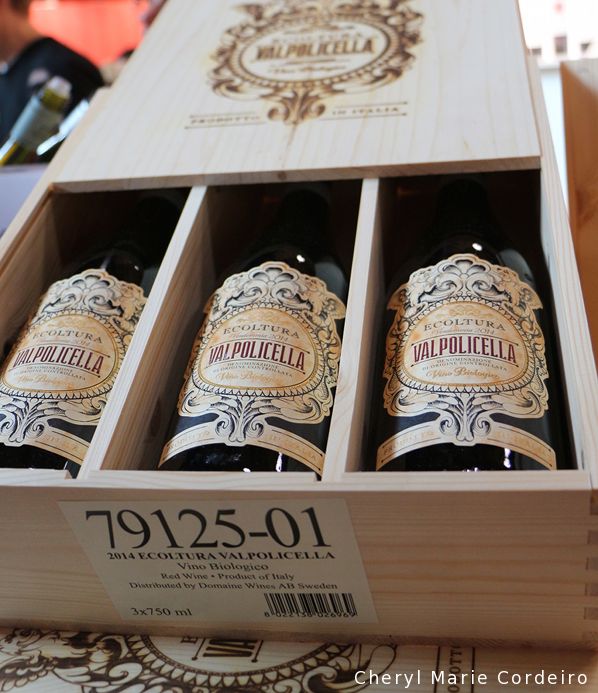
This year’s feature from Domaine Wines Sweden brought in from northern Italy’s wine district Valpolicella – Ecoltura Valpolicella. It’s an ecological red wine from Fasoli Gino Winery that specialises in ecological wine production in the region of Verona. Valpolicella is well known most of all for its distinctive and robust red wines Amarone (Denominazione di Origine Controllata e Garantita (DOCG)) and Ripasso.
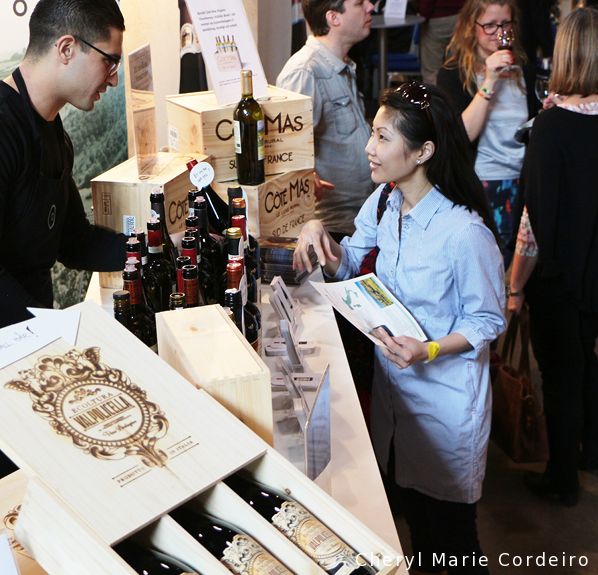
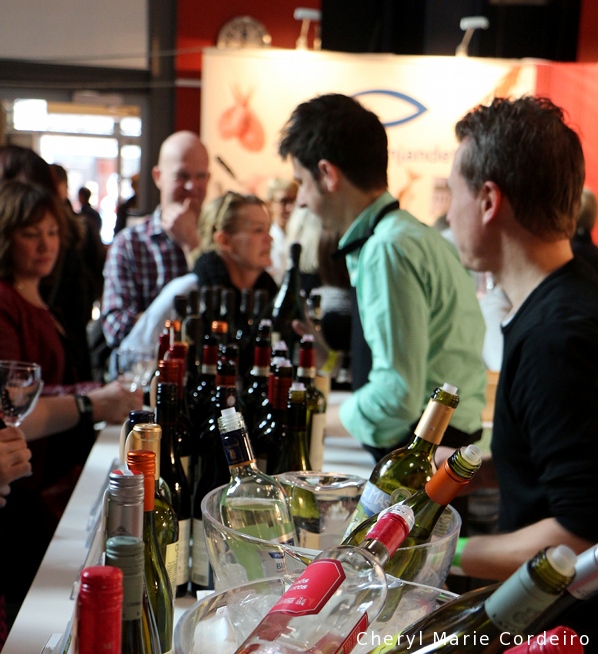
At Domaine Wines.
Med Deli
I’m always interested in new faces at the food fair. This year, I had the opportunity to meet with Michel Elias, who is President of I.S.A. Spa Italy, who has a cooperation with Swedish Med Deli, bringing to the Swedish market foodstuffs from Sardinia, Italy.
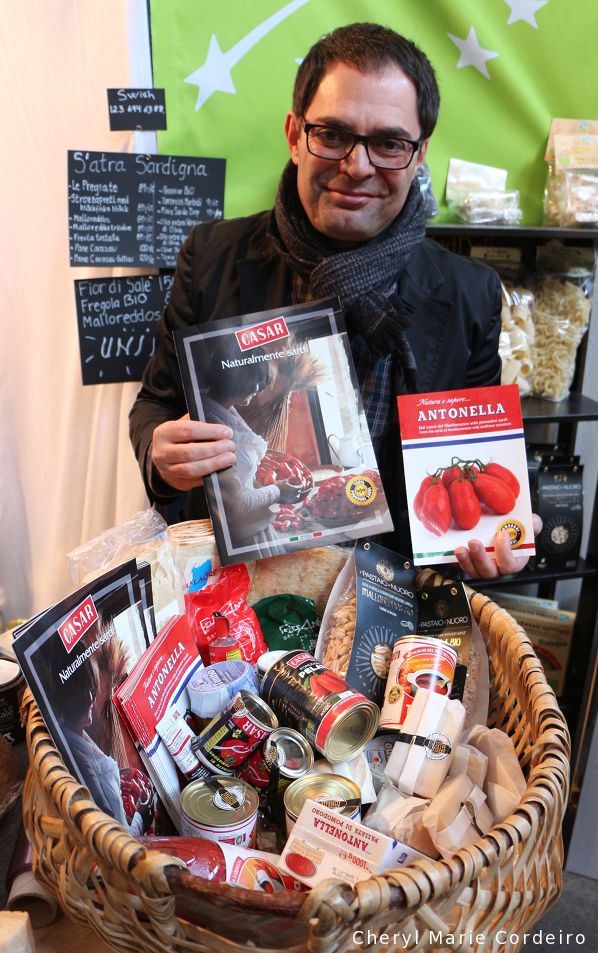
Michel Elias, President, I.S.A. Spa Italy at Passion för Mat 2016, Gothenburg, Sweden.
Mention Sardinia and what comes to mind is its beautiful coastline, aquamarine seas and that Mediterranean diet that help you enjoy longer living [3]. Processed tomatoes come secondary, if at all. But what the Swedish market can look forward to in the near future are Sardinian processed tomatoes, peeled, chopped, crushed and puréed that will establish themselves at the top end of the quality scale [4]. Well worth a try as an eye opener for anyone who still think canned tomatoes are all the same. The region has been growing tomatoes since the 1800s and began industrial production during the 1960s and some of their manufacturing processes have won ISO certification including that for environmental protection and management safety at work.
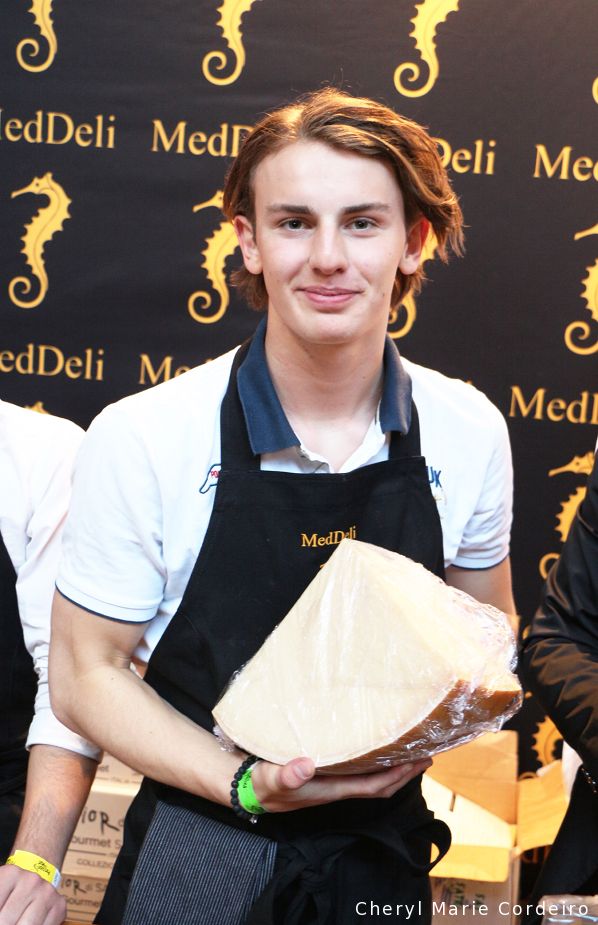
The interest for sampling well aged Parmiggiano-Reggioano at the booth seemed endless, as was the supply.
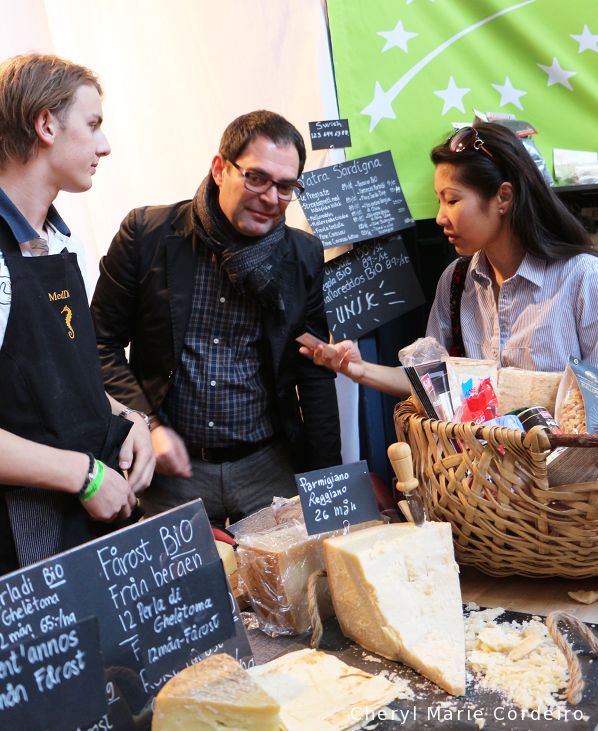
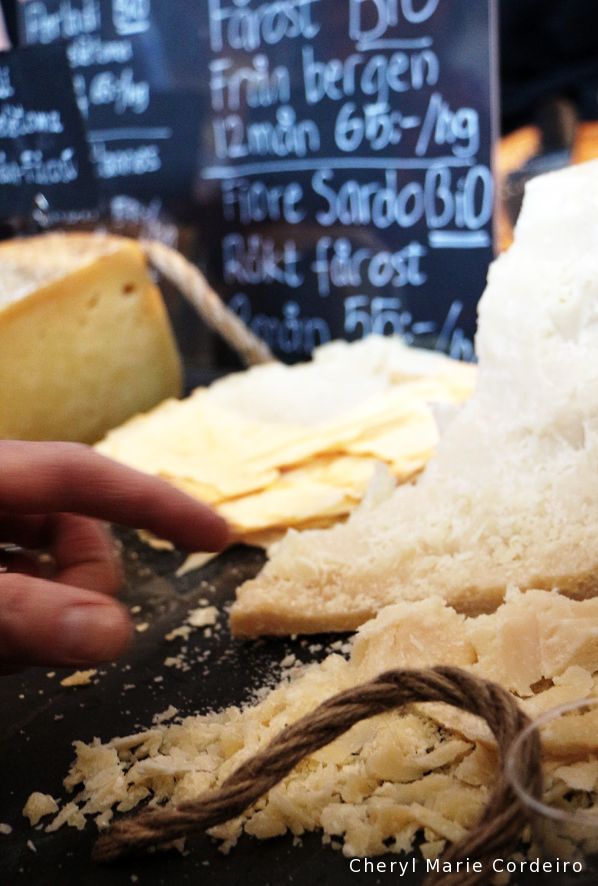
Irresistible.
Mushrooms: grow in box
From new suppliers in the Swedish market to new concepts that redefine ‘locally produced’ – mushrooms that grow in boxes for restaurant keeps, or your very own kitchen at home.
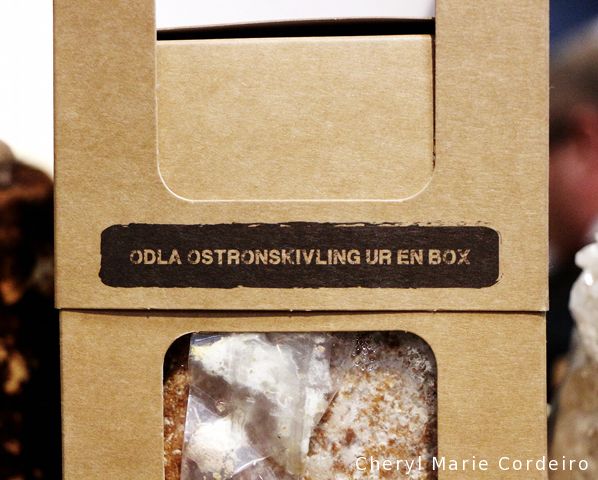
New pet for the home.
As I walked into this mushroom in box exhibition booth, the lady behind the counter was going around misting water on the mushrooms. Noting that I was following her around the booth as a curious child, she looked at me and said, “They don’t like the air here you know. It’s too dry.” I smiled and nodded. Yes, I could see how their button heads would perk up and smile with a bit of moisture on them.
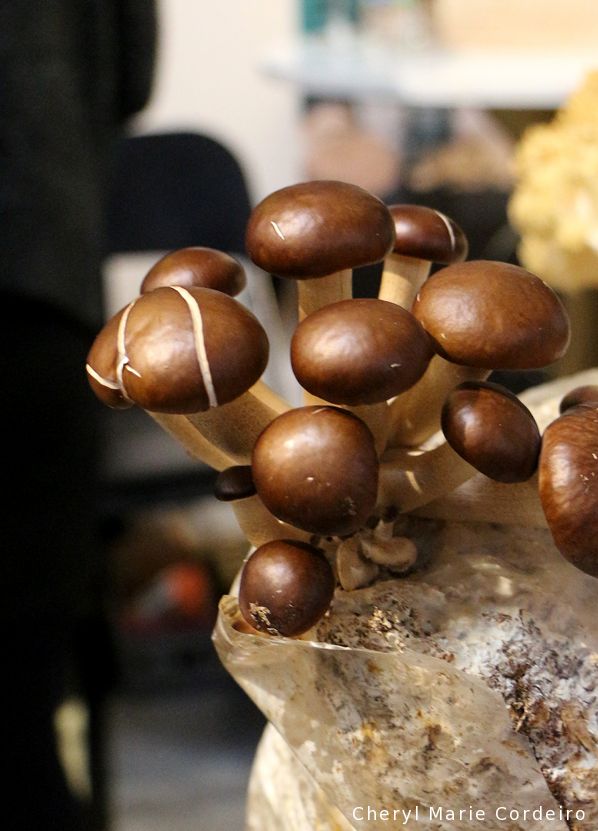
Mushrooms that grow out of compost that look like meringue or angel food cake. These would as much be an interior design conversation piece, as a culinary creation conversation when your dishes are served to your guests.
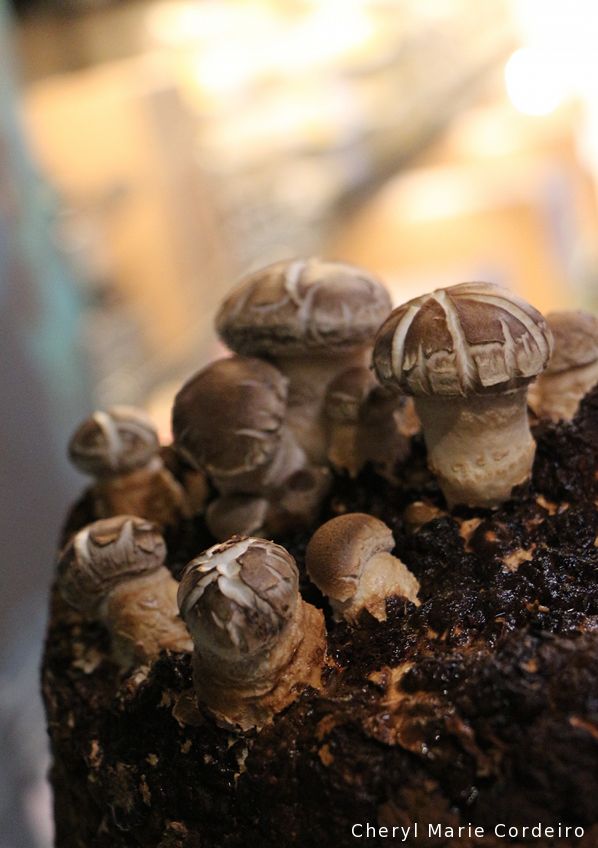
Growing pretty.
Deli o Vin
As much as the Nordic cuisine wave is sweeping over Sweden, Gothenburg as a harbour city has always had an international facing. As indication of the continued development of international fare in the city’s culinary scene are the changes ongoing with Deli o Vin who currently have the popular Verandan café near the Gothenburg harbour front. Stefan Demén, owner of Deli o Vin explained in all enthusiasm of the upgrade and reconceptualising of Porterpelles Café o Bistro at Klippan in Gothenburg aimed to be opened in May 2016 to which he is part owner of the enterprise. The food to be served is a mix of Italian and Swedish fare.
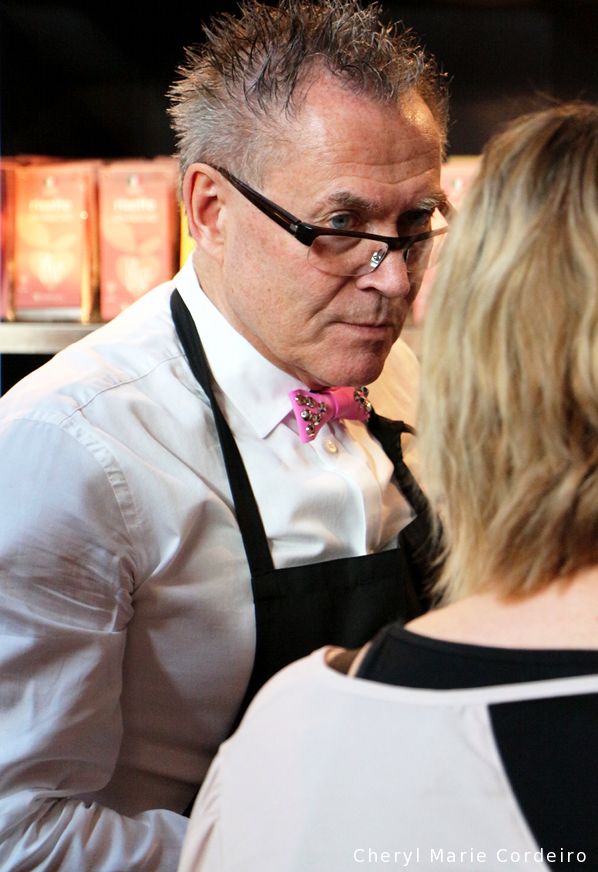
Stefan Demén, owner of Deli o Vin.
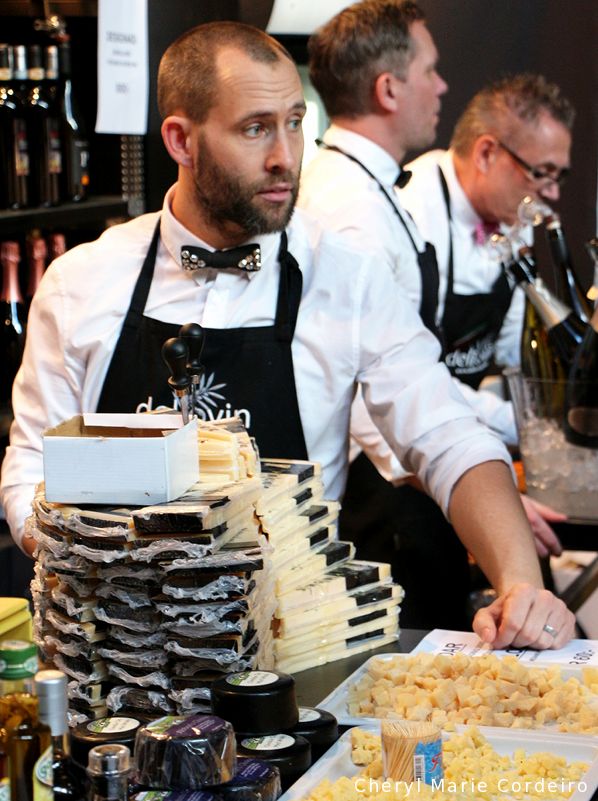
Robin Demén, Deli o Vin.
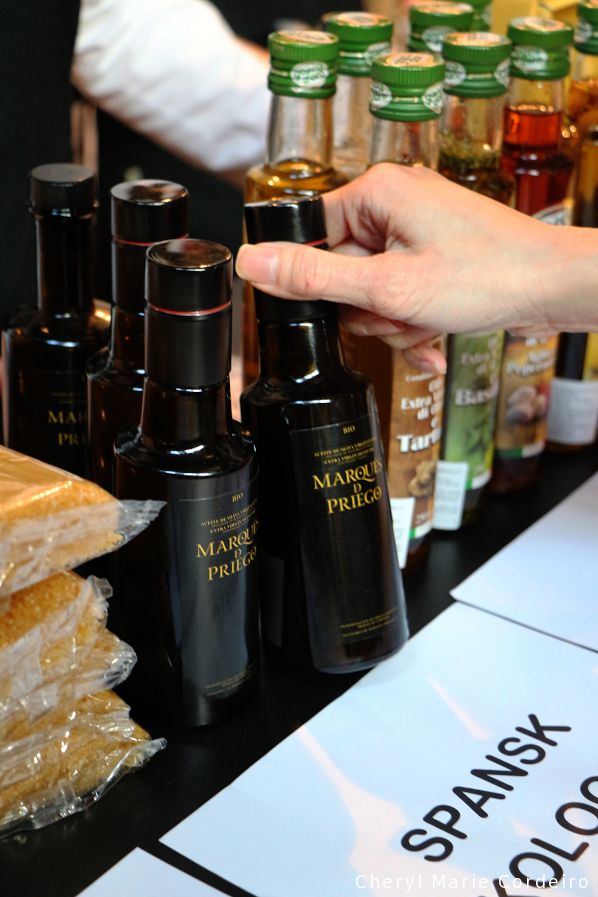
Marqués de Priego Bio, extra virgin olive oil from Andalucia, Spain.
An import of Deli o Vin for the Swedish market is this extra virgin olive oil from the Natural Park of the Sub-bética in Priego de Córdoba. Priego de Córdoba is a town and municipality of Andalucia Spain in the extreme southeastern portion of the province of Córdoba. Culturally mixed and with soil rich in minerals that drew people throughout its history to conquer its lands for its resources, the characteristics of the terrain can’t help but infuse the olive oils with notes of grass from its flat-lands and green almonds.
Stunningly fresh greens and veggies, a traditional high point of the PfM Fair
With the variations of olive oils from around Europe to bring home, one couldn’t help but note the greens offered at this trade fair that promise to make the perfect salad to delight the olive oils, else fresh herbs that accompany the meats to the salads to the olive oils.
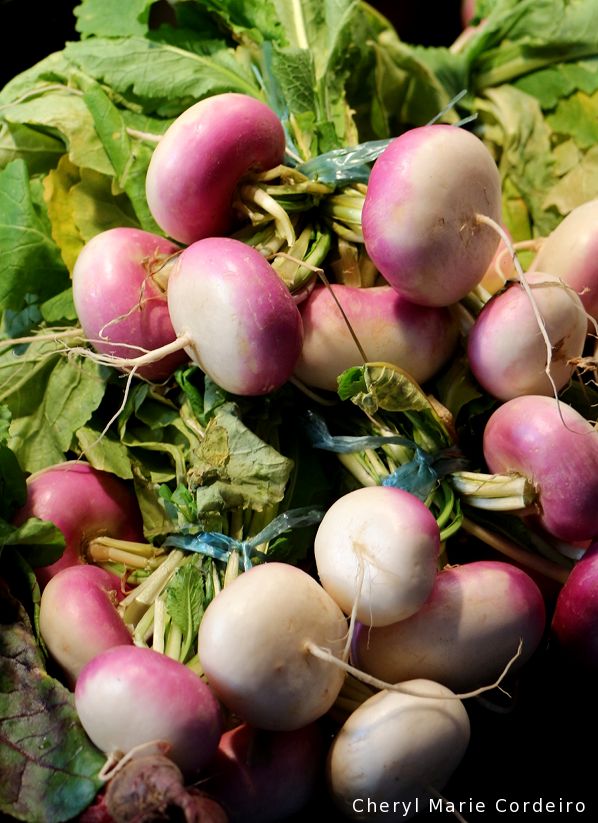
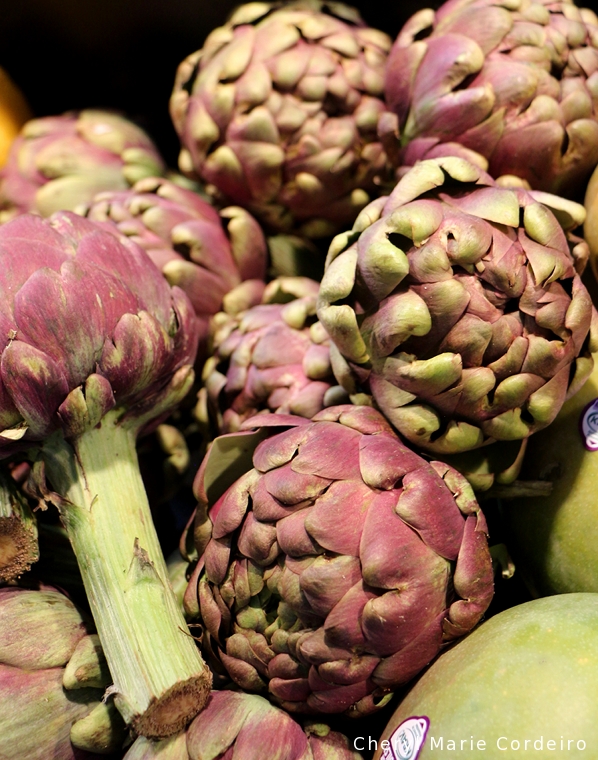
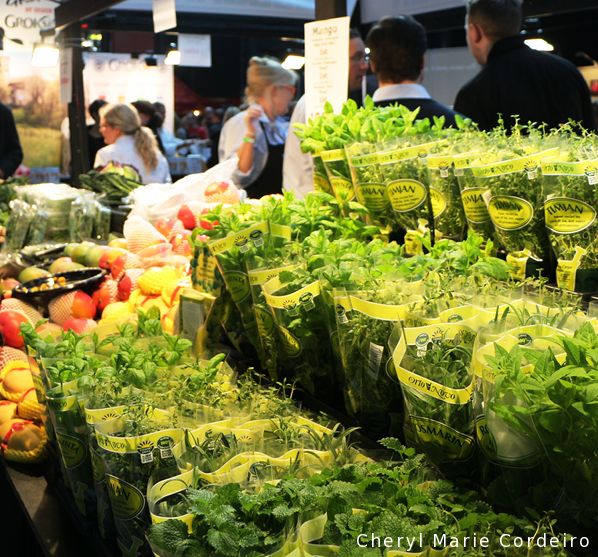
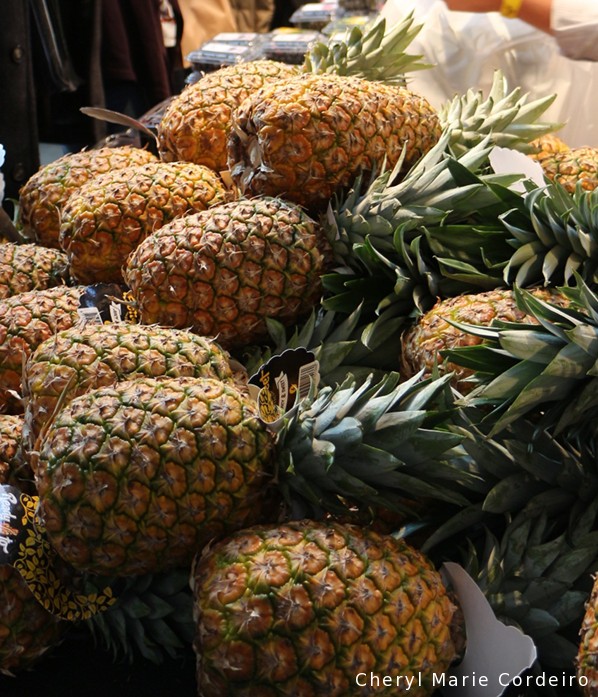
Johan i Hallen Göteborg
This year my personal interest in the Fair was much focused on the importance of the human touch in gourmet food production, some interesting conversations were had with meat product producers. The topic was process automation and the use of robots in the industry.
Johan i Hallen began their operations at Kungstorget in Gothenburg in 1916. On display – and use – was a magnificent retro looking cutting machine Bella Nera by Avery Berkel to which I had asked if they would ever consider replacing that with a 7-axis robot. The answer was a flat, no. Not because they were against new technology, the company was very much into process automation, but for the fact at their sleek Ferrari looking black cutting machine was a point in conversation itself. They saw the company’s heritage in that machine, and it had fantastic sentimental value.
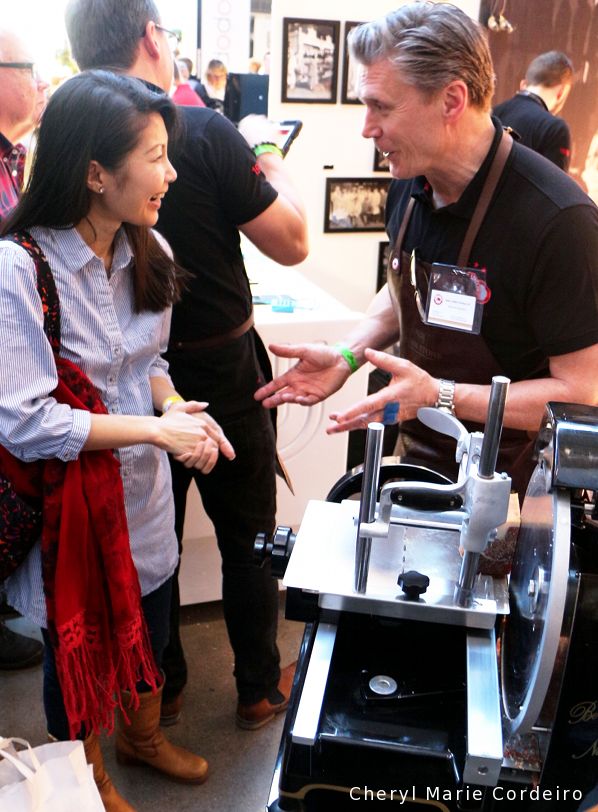
Cheryl Marie Cordeiro, with Michael Fendell of Johan i Hallen, Gothenburg.
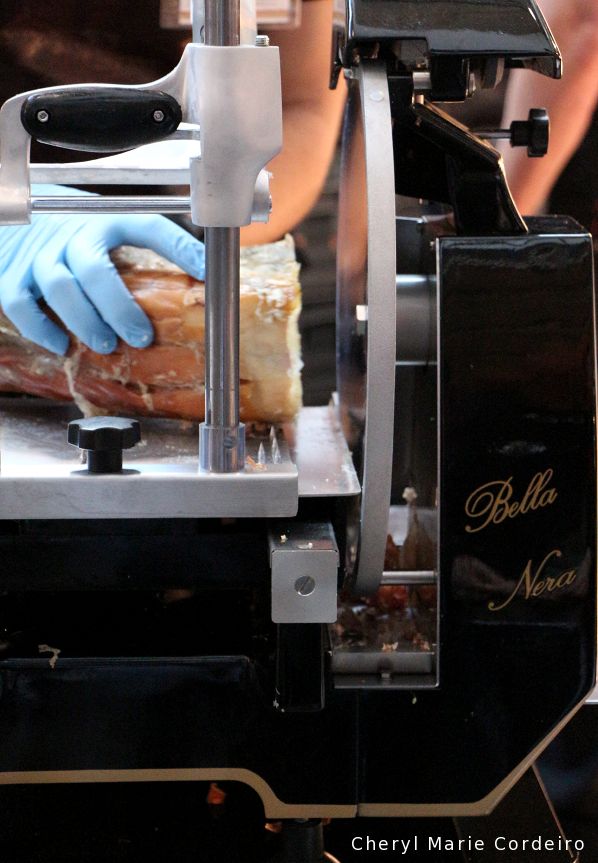
Bella Nera, a retro machine made specifically for cutting prosciutto/parma.
Jakobsdals
When it came to process automation, Jakobsdals, owned by family Pettersson had a different philosophy. Beginning their operations in 1936, what began as a small family business had grown in operations now in their third generation. This meant that they had to adopt new technology fairly quickly, and in their case, felt that technology could not for the moment live up to their expectations in terms of efficiency or dexterity of handling meat produce. The producers had no intention of changing the product to accommodate a machine.
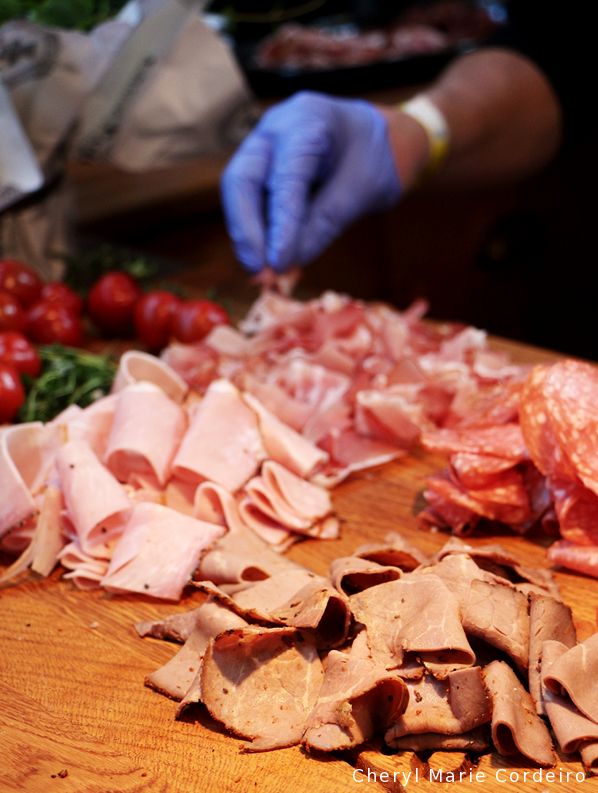
Jakobsdals began operations in 1936 with Agnar and Inga Pettersson when they bought over Haga Charkuteri in Gothenburg.
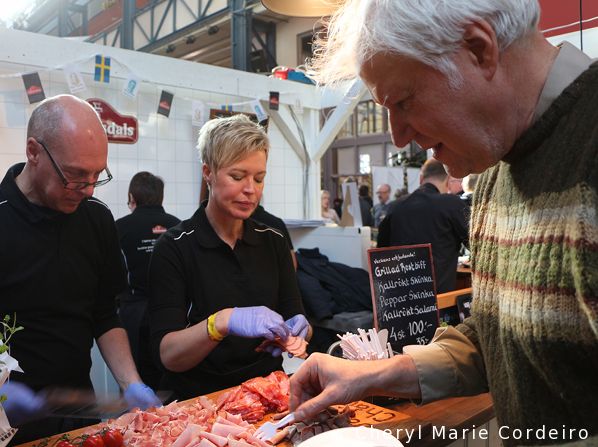
Remarkable ham and salami products of highest international standard, ideal for tapas and any high quality buffés, made by Jakobsdals.
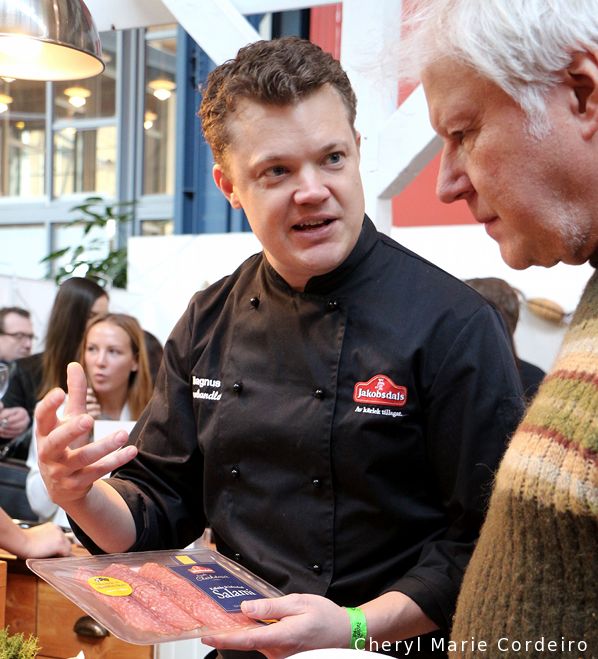
Magnus Pettersson of the family Pettersson that owns and operates Jakobsdals, talking business philosophy with Jan-Erik Nilsson, original co-founder of the ship building Ostindiefararen Götheborg project, the very ship resting at the quay just outside of the fair.
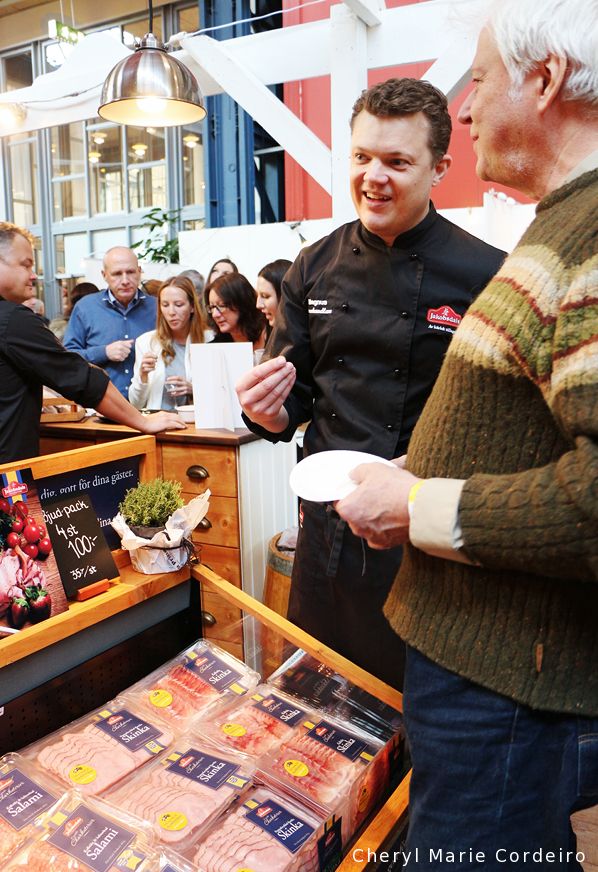
Togora olive oils
One of the best things about trade fairs – meeting up with old friends! To which one of the first things I mentioned to Lambrini was how I had searched the markets for her olive oil when in the city of Västerås. Reason being is that I love stone oven baked breads, heavily laced with a good olive oil, and when it comes to top of the line hand made olive oils, her’s from her own olive plantation at the island of Lesbos, Greece, is my favourite. Olives like everything else need love and now her endless care to her olive plantation loves her right back.
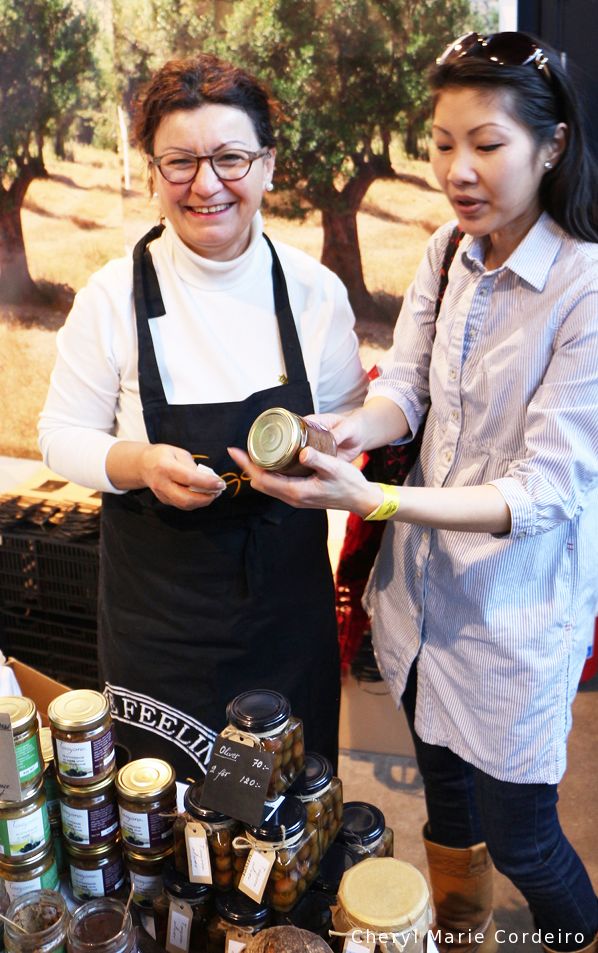
Lambrini Theodossiou, producer of Togora olive oils now has her own range of mild and friendly tapenades.
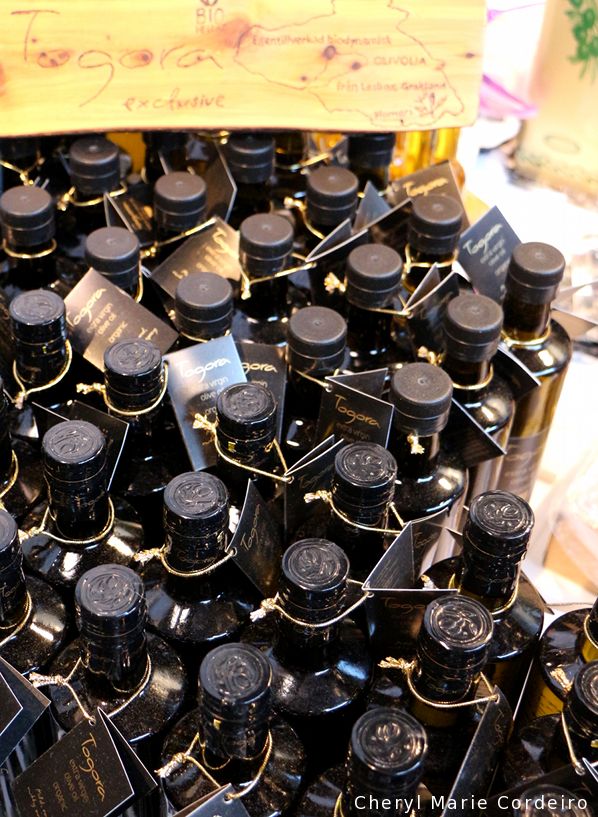
Togora remains one of my favourite olive oils. It’s the perfect lacing to a home baked sourdough bread.
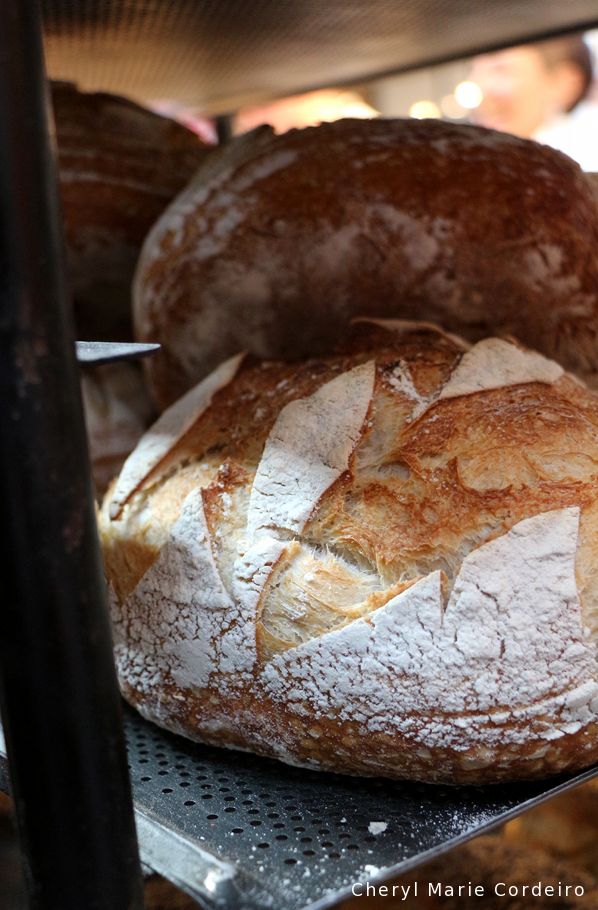
Like this one.
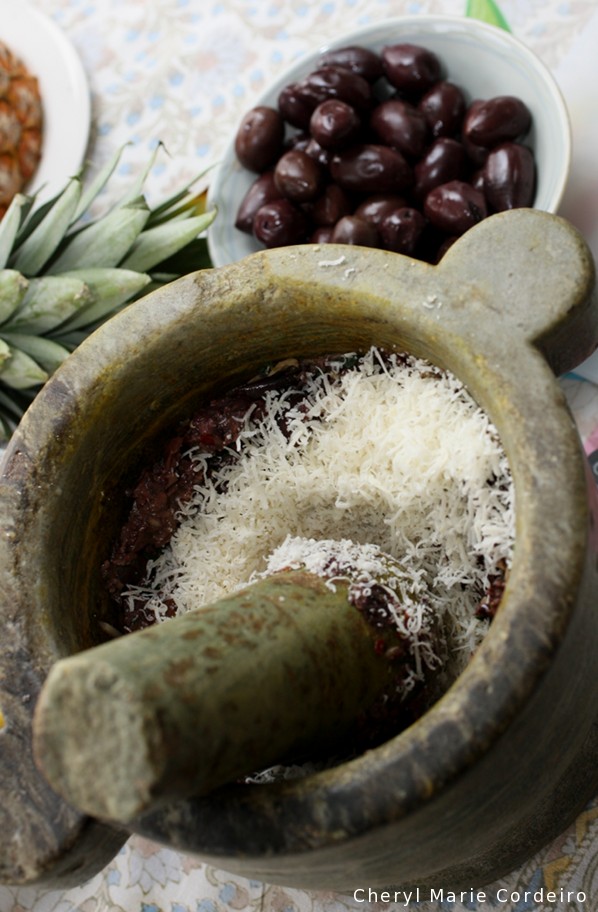
Right back at home, I made my own hot and fiery tapenade with calamatas, fresh basil, red hot chilies etc. and a dusting of Parmigiano-Reggiano. I then generously laced this with Lambrini Theodossiou’s Togora olive oil to make a thick spread for bread. Stirred in with even more Togora olive oil to make more fluid in consistency, this makes a killer salad dressing.
France Fromage
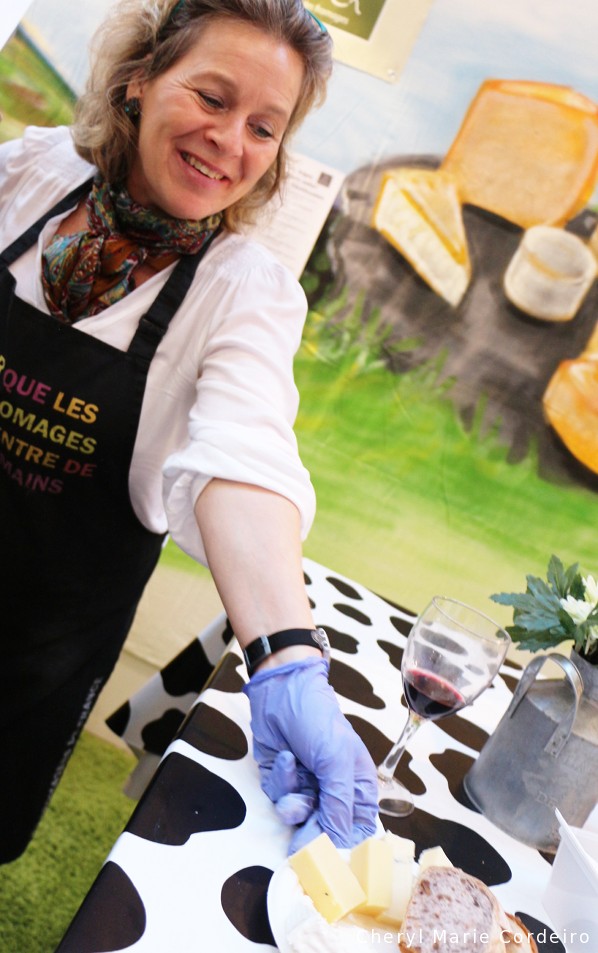
Maria Six of France Fromage, coming with a cheese platter. A delight to have a little behind the scenes sitting at their exhibition booth.
I met Jacques and Maria Six of France Fromage in Passion för Mat 2014 when I couldn’t help but notice their fine fresh cheeses that reminded me of my visit to Santa Maria de Montserrat in 2011. Montserrat is a Benedictine abbey located on the mountains, about forty-eight kilometres from Barcelona, where I found the most delightful of cheeses crafted by the monks themselves. To find that quality in Sweden is a treat.
It is remarkable how Jacques and Maria manage to keep such a large selection of so perfectly matured, individually different, and interesting assortment of special cheeses. I admire that. I have yet to buy a single mediocre or boring cheese for a cheese platter from them. Not only do the cheeses have a personality and identity of their own, Jacques’ deep expertise and knowledge of cheeses makes him a privy friend to them all, knowing everything about each and every one of them.
In the rush hours of the trade fair crowd nearing the end of day, I was completely relieved to have found Jacques and Maria at their stand, ready with a plate of select cheeses and home made breads.
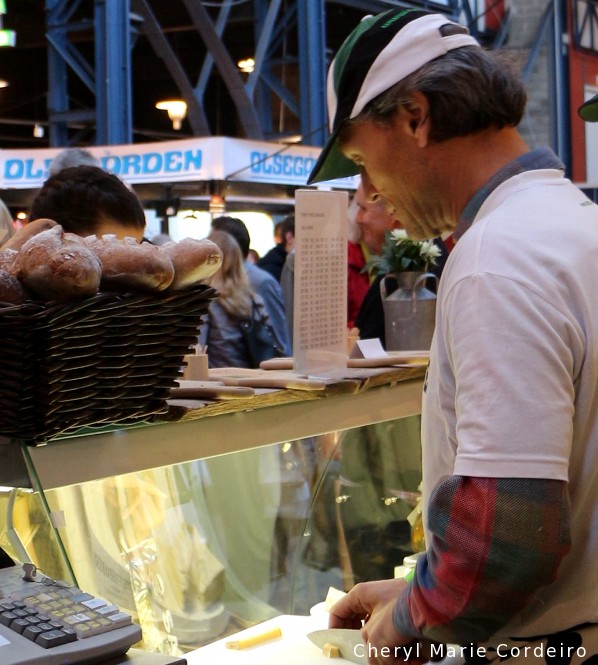
Jacques Six, behind the counter at France Fromage.
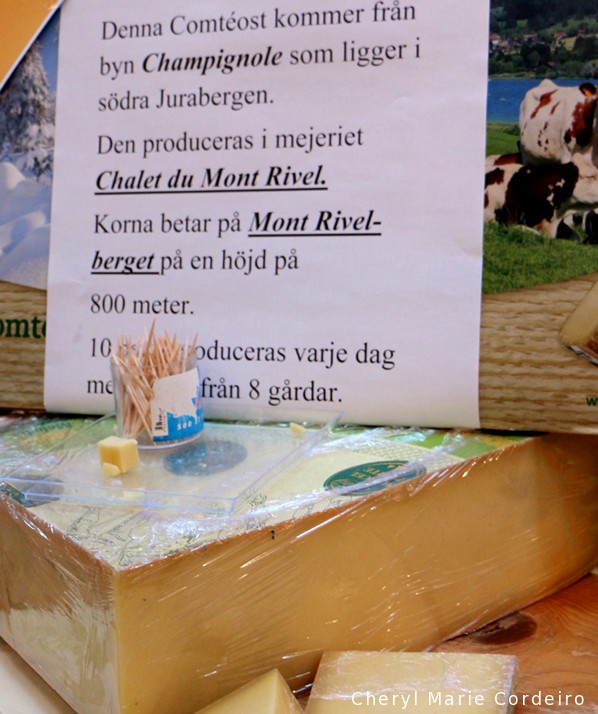
Geographically marked.
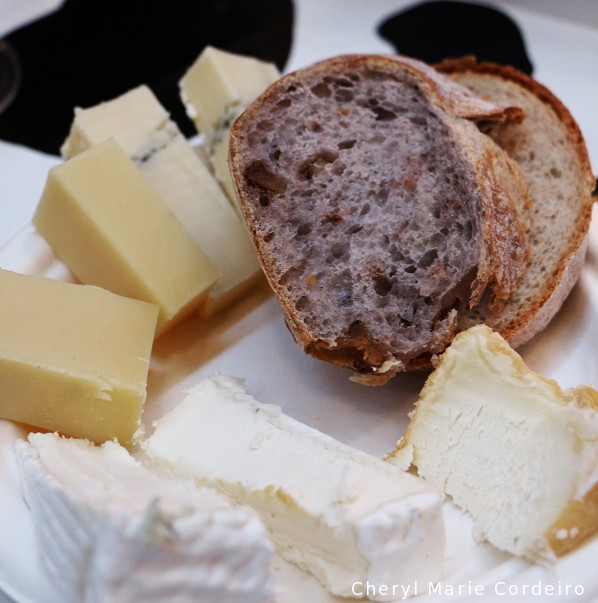
A selection of goat and cow milk cheeses from various regions in France, from Iles de France to the Loire, Jurabergen and Languedoc.
Köksskolan
Every year, the trade fair reaches out to the public by having an open kitchen school where people can learn of the different combination of flavours and how to cook things optimally. The presentations at the kitchen school revolve around this year’s theme of “Food with Identity”. Just next to the space of the kitchen school are where people might find interior design or kitchen utensil ideas. There’s also space for where the public can meet with their favourite chefs. The program leaders for this year’s kitchen school are Johnny Johansson, Maria Zihammou and Rickard Halleröd.
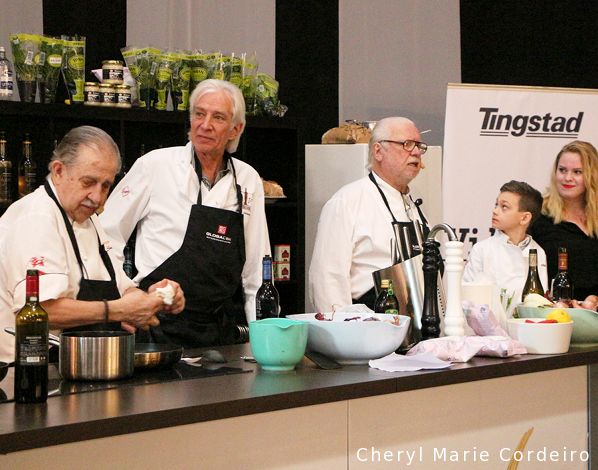
On scene, Nobel Dinner Chef Johnny Johansson and renowned master chef Leif Mannerström.
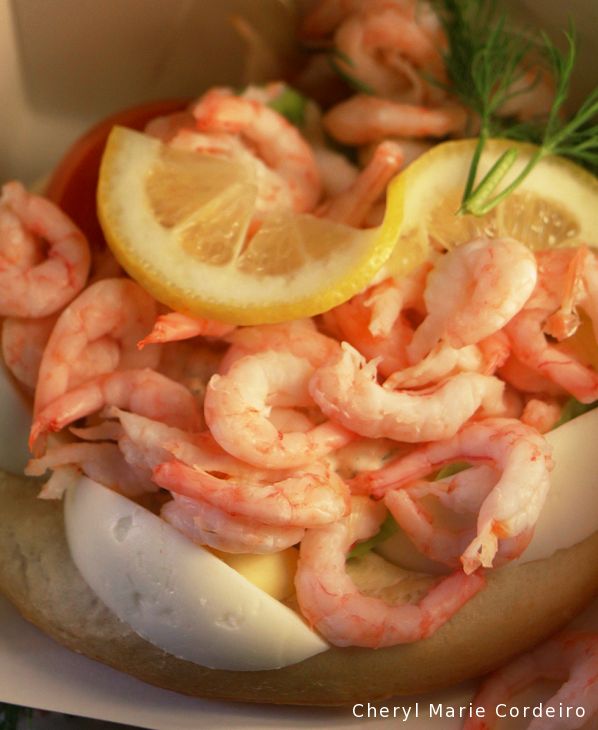
Shrimp sandwich, typical of Gothenburg maritime fare.
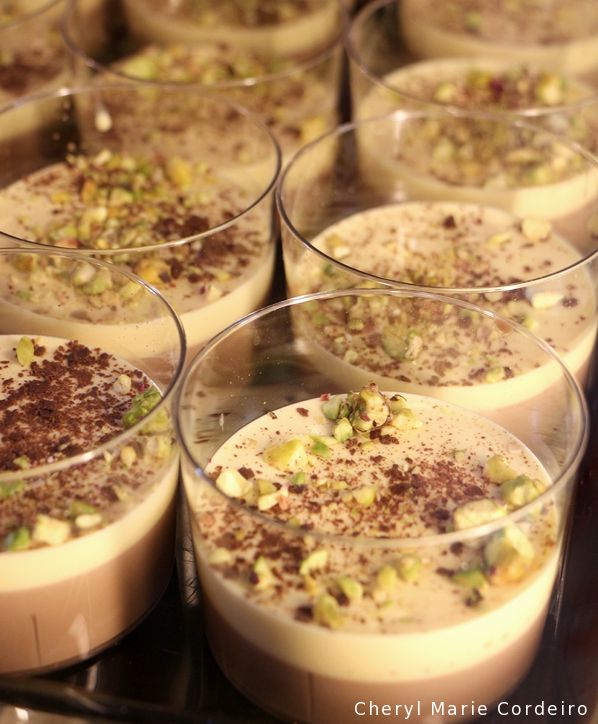
Chocolate pistachio pannacotta.
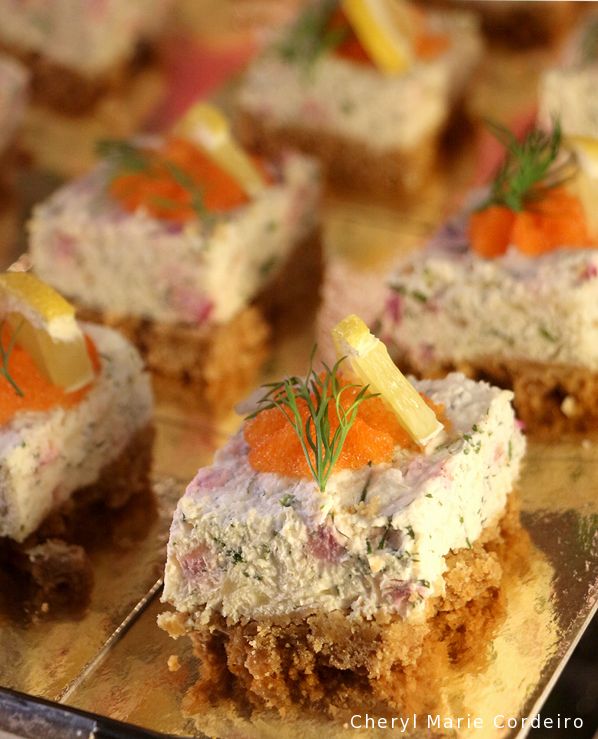
Seafood mousse confection that looked pure dessert.
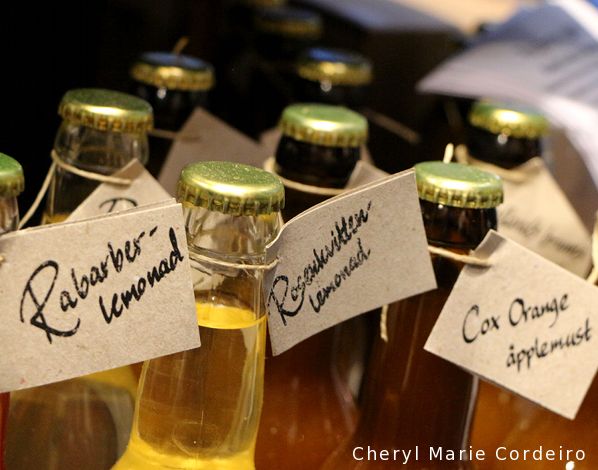
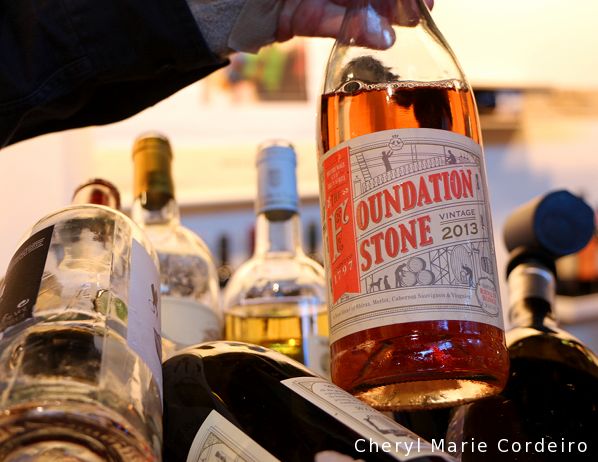
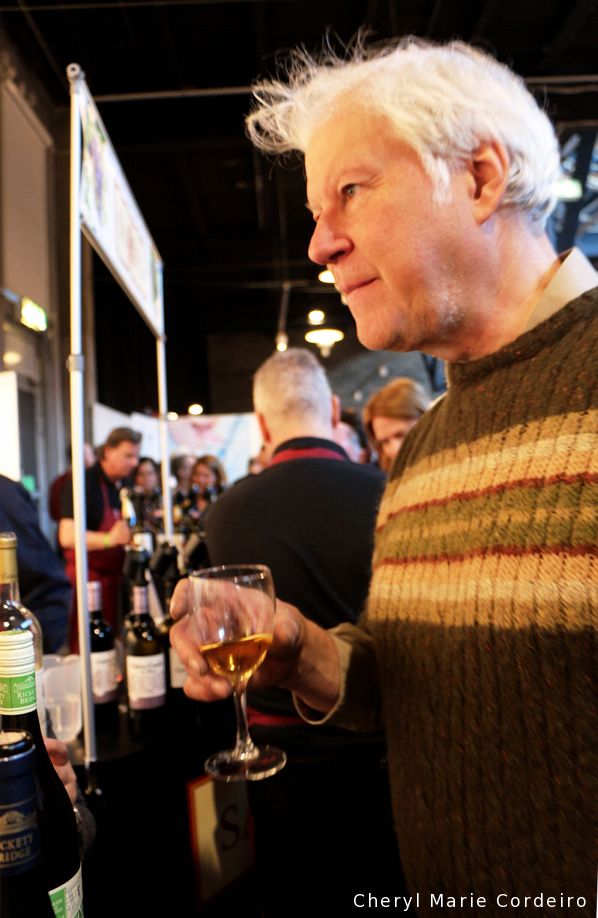
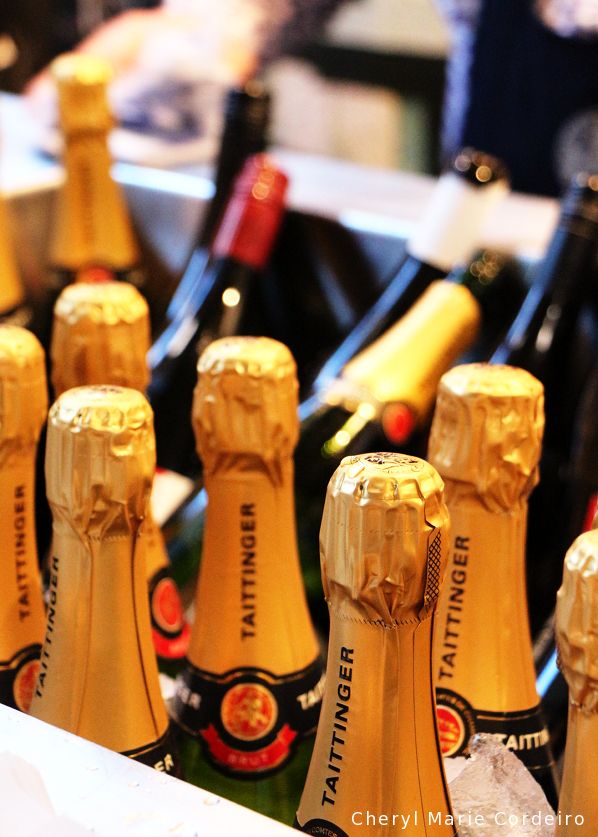
Champagne Taittinger
Our round of the fare that began with a visit to Domaine wound down with some Taittinger Champagne at the Sjömagasinet stand. As Winston Churchill had it “Champagne should be dry, cold, and free”. Well, we had two out of three. Close enough.
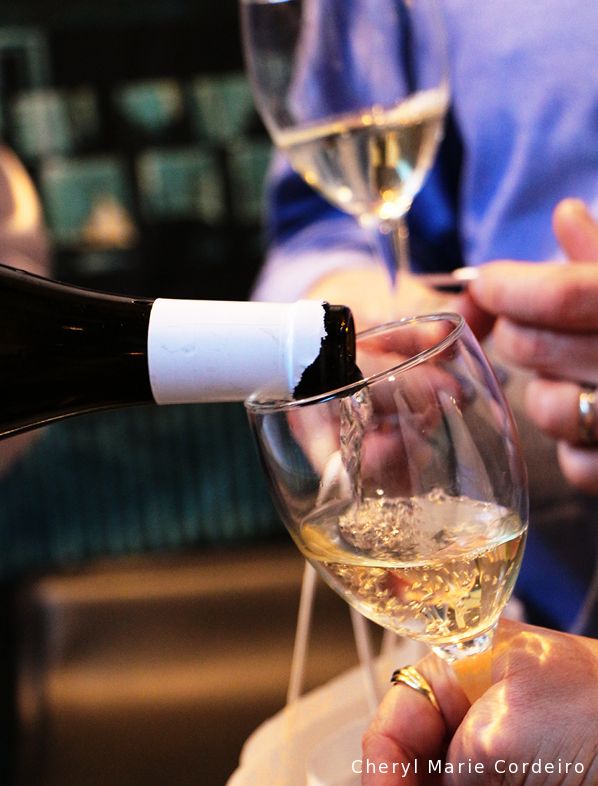
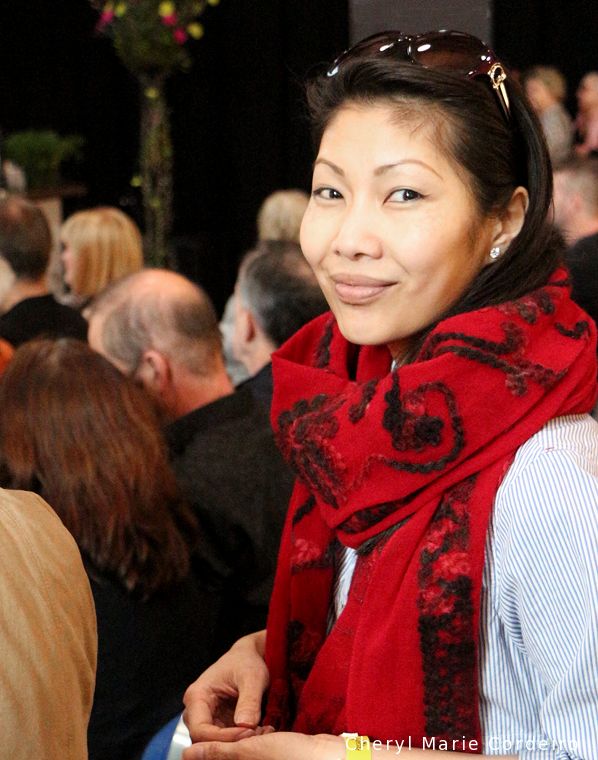
Author bio: Cheryl Marie Cordeiro is former Miss Universe Singapore 1999. She has a Master of Science in Information Studies from the Nanyang Technological University (NTU) of Singapore, and a Master of Arts in the English Language from the National University of Singapore (NUS). She has a doctoral degree in general linguistics from the University of Gothenburg. She is Research Fellow at the Centre for International Business Studies (CIBS), School of Business, Economics and Law at the University of Gothenburg. She is currently a Flexit scholar of the Bank of Sweden Tercentenary Foundation, Riksbankens Jubileumsfond (RJ), doing her post-doctoral degree at ABB Corporate Research with the User Experience & Industrial Design group in Västerås, Sweden. Her CV can be found on her webpage at www.cherylmariecordeiro.com.
This blog post is non-commercial and written out of personal interest.
Reference
[1] Mantrov, V. (2014). EU law on indications of geographical origin: Theory and practice. Cham: Springer International Publishing. Doi 10.1007/978-3-319-05690-6.
[2] European Commission (2016), Agriculture and Rural Development, DOOR. Internet resource at http://ec.europa.eu/agriculture/quality/door/list.html. Retrieved 28 Feb. 2016.
[3] NBC News (2015). Sardinia’s Mediterranean diet: 10 foods that may lengthen your life, Today, Lifestyle, Health & Wellness, 10 Apr. 2015. Internet resource at http://on.today.com/1FDbkDR. Retrieved 29 Feb. 2016.
[4] Rogers, K. (2016). Top tomatoes: gourmet canned and jarred varieties tested, The Guardian, 19 Jan. 2016. Internet resource at http://bit.ly/1lr5r9D. Retrieved 29 Feb. 2016.
